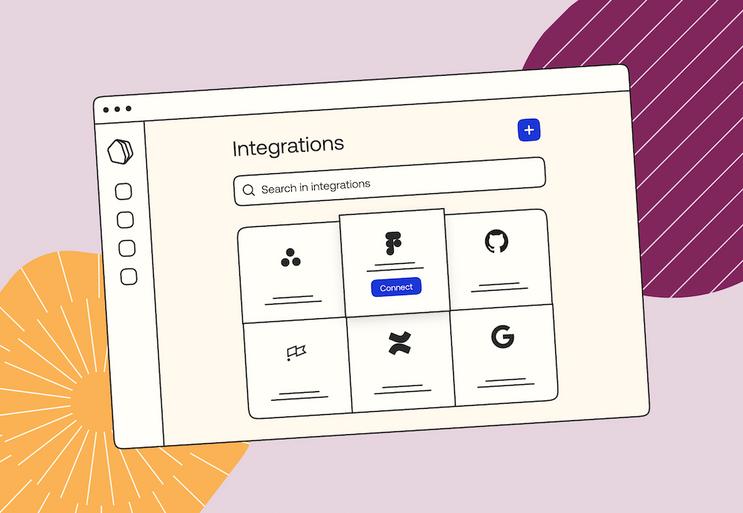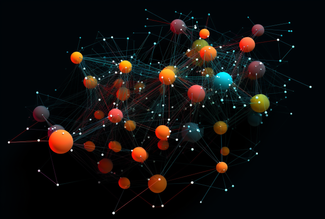
Lost in the jungle of workspace apps?
The workspace is exploding with software apps
For a category that’s been around for just a few decades, team productivity and collaboration SaaS has quickly taken its place at the center of our working lives—very quickly. According to 2020 research by Okta on how businesses run today, the average company is now using 88 workspace apps and over 10% of companies use over 200!
SaaS startups, and especially the many launched over the past decade, are a reflection of one thing: as the world becomes more and more digital, our ways of working are changing. Offices have gone from physical to remote, documents from printed to Google Docs, from face-to-face chats to Slack and Zoom, or async tools like Threads, from managing projects on physical whiteboards and cork boards to virtual kanbans and gantt charts with Asana and Trello, and from paper folders and filing cabinets to online wikis with Confluence and Notion...the list goes on. There are so many productivity and collaboration tools that you can now find various maps about the space.
Each of those tools is unbeatable at their specific purpose: collaborating on docs, managing projects, storing files, connecting team members, etc. What is missing is the actual virtual workspace, the one place where you can bring all those blocks, and the precious knowledge that lives in them, together and from which you can control everything.
And it’s not necessarily only about control, but about the compounding value that comes from putting these blocks together. After all, the whole is greater than the sum of its parts.
Why do you need this virtual workspace or team hub? Because under this progressive workspace unbundling (and a pandemic that threw everyone into remote work), teams might feel as lost as if they were alone in the jungle.
A jungle of tools, tabs, and apps
With the explosion in SaaS usage, many teams start feeling lost. When you say the average mid-market company uses 185 apps, it still feels ok. But when you consider app-to-person connections, that number grows exponentially to 4,406, according to Blissfully.
Even worse, those people do get lost trying to remember where everything goes, or where things are supposed to go (eg. folders, pages, in which format, etc.).
But the real promise of these apps isn’t just in what they do individually — it’s what they can do together. And that’s because each of them is great at something, but imagine what they could do if they’d work as a team.
Over time, confusion grows, which is no wonder since 77% of teams we spoke to report that in their company there is no process for documenting or storing information. Whether you’re a new hire or a seasoned employee, it’s become too easy to get tangled up in a jungle of open tabs and apps.
As such, 71% of the same teams say that they spend too much time searching for information like files, projects and people’s details. That comes with a high price in terms of:
- Time and resources wasted scrolling through threads, channels, and search engines that don’t always work—time that could be used on more productive, valuable tasks;
- Unnecessary meetings, since when information is difficult to find, there’s a tendency to set up too many informal catch ups, which become a headache with remote teams;
- Duplicate work, occurring when people assume the information either doesn’t exist or is lost, so they spend their time recreating it.
Some people may look at that and think, “That means there’s still a perfect, all-in-one workspace app waiting to be built!” But it’s not that easy.
The missing piece of the SaaS puzzle: The work hub
The next generation of teams doesn’t need a better documentation tool or better chat. Teams need a compass to better navigate this jungle of apps—an operating system that brings all the pieces of our modern workspace together, and lets teams keep using each individual app for its specific purpose.
Imagine having quick access to all the company information gathered from all these tools—people, teams, and projects—without the need to ping anyone.
Having all those pieces in one place instead of spread across a thousand open tabs and apps means that employees have more than just a map of the jungle—they’re able to serve as their own expert guide, feel empowered, productive, and connected with the team, ensuring that they’re always happy at home at the end of the day.
With 60% of teams we spoke to saying they have no visibility on what others are working on, that kind of centralization can bring significant value to productivity, collaboration and overall cohesion.
Plus, there are real costs associated with needing to keep everyone engaged and using all those workspace apps: duplicate and orphaned subscriptions are up respectively 80% and 100% from 2018 to 2019 (Source: Blissfully, 2020). Having an operating system that brings them all together could generate significant savings, both in terms of time and costs.
Take a simple example: You manage a 15-person cross-functional growth team made of engineers, designers, product managers and growth marketers, each using some tools in common (eg. Slack, Google Drive, Confluence), some using unique tools (eg. engineers are on Github and JIRA, designers on Asana and Figma, and growth marketers on Zapier, Hubspot and Notion). As a team lead, your job is to track everything that’s been done during the first month on various cross-functional projects.
Today, that means:
- Keeping track of project links and resources from all the different tools each team is working on (eg. the Asana board from marketing, the Figma prototypes from design, the JIRA tickets from product, the project Slack channel(s), etc.);
- Gathering recurring updates by asking each team member to individually report on what they’ve been doing (which is a lot of time and effort for everyone, and everyone has a different way of doing it); you’ll then need to re-package those updates into a single update to report to your Director or VP;
- Endless scrolling through Slack, and emails, and Dropbox, and Asana, and Trello, trying to ignore the noise to find the signal. Not only is it draining, but it comes with a big risk of missing important information;
- Standardizing recurring processes like reporting, briefings, approval processes, 1:1s notes, etc. to ensure that everyone is following the same pattern on recurring tasks, all without falling into micromanagement.
Well, this sounds like a full time job on top of your actual one.
What if there’s a better way? A tool that brings all of your workspace apps under one roof and orchestrates together their unique talents to give you instant visibility on everything your teammates are doing across each of those products. A product that gives you a birds-eye view over everything that’s happening at your company, and without the need to ping anyone.
Connecting teams, and all their tools, together
Remote work has to incorporate the growing diversity of tools with teams that don’t see each other every day. Although each of those tools is great at what it does, today it’s a struggle to make the most out of each of them together. That’s a shame, since it’s clear that the whole of all those tools could be much greater than the sum of the individual parts.
So what’s the solution? Check out this article, where we dive more into the details of what this might look like, and how teams need to adapt to keep up with remote collaboration.



